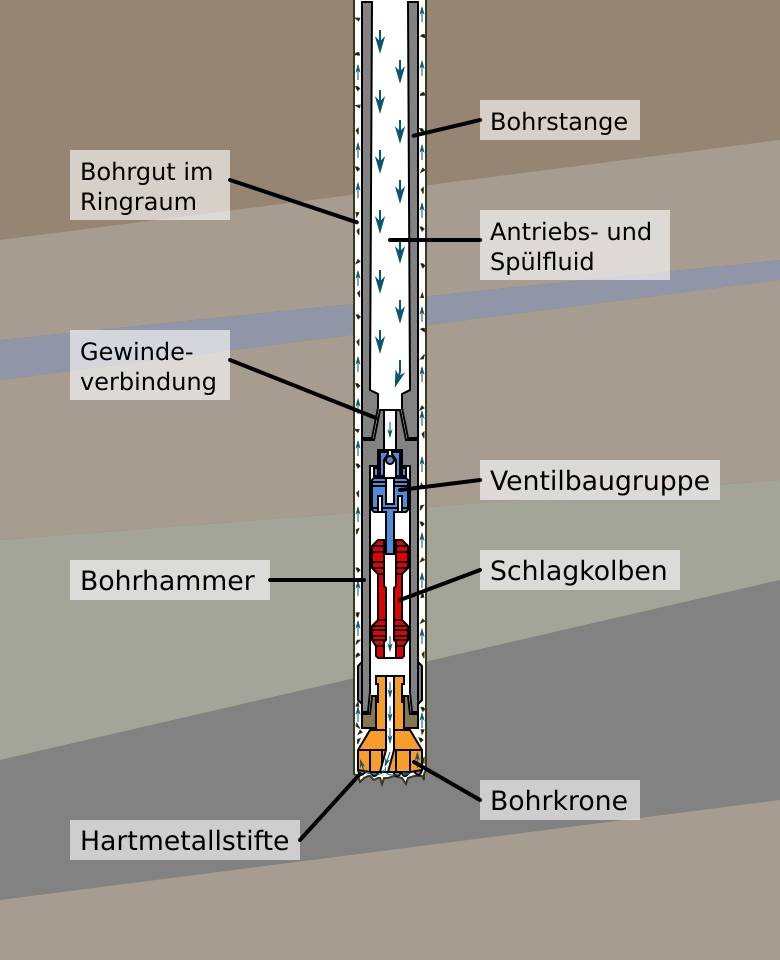Down-the-hole (DTH) hammer drilling is often used to drill large, deep holes in hard rock formations or concrete. It is, as the name tries to explain, a hammer drill which is positioned down there in the hole. It is as effective as handheld hammer drilling machines which are widely spread. Pneumatically driven DTH hammers are widely spread and known in the industry, however a hydraulic driven DTH hammer drill is still a challenge.
The DTH hammer is positioned at the end of the drill string, it is screwed to the drill rod which delivers a drilling fluid powering the hammer mechanism. The hammer itself moved by the drilling fluid, hitting the anvil at the back of the drill bit. The drilling fluid exits the DTH hammer at the drill bit, removing all the cuttings and is also responsible for wellbore control.
Basically pneumatic hammer drills work. They do their job and they do it in a great way – if the presence of air inside the hole is acceptable. If it comes to deep drilling, the air might need to lift groundwater or wellbore control is needed, this is sometimes challenging or impossible to achieve when using air as drilling fluid.
Some hydraulic driven DTH hammers have evolved now and are also available on the market, there is, for example, the Wassara hammer system which is driven by water and used in many applications.
The development of hydraulic hammer technology is onging since about 100 years, you can read about that in the article historical development. Some similarities between all those different drive mechanisms can be classified into hydraulic drive mechanisms, which is also done many times in science and development.
